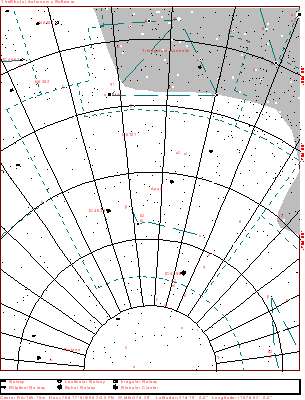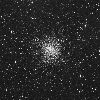
| Home | Deepsky Atlas | TheAstronews | Links | Solar System | ||||||

Hawaiian Astronomical SocietyConstellations: Apus -- Footloose, but Colorful |
||||||||||

Click the map for a 916x1200 version of the above. Click here for a map better suited for use in the field.

This a more detailed view of the constellation. The map displays stars to magnitude 10, and deepsky objects to magnitude 12. Click here for a map better suited for use in the field.
 72k JPEG NGC6101 (Bennett 74, Caldwell 107) is a relatively faint (mag. 9.3), large (10.7'), irregularly shaped globular cluster. Like most globulars, this one is quite condensed, with stars beginning to resolve at mag. 14. It lies 2.2° south of Zeta Trianguli Australis. 72k JPEG NGC6101 (Bennett 74, Caldwell 107) is a relatively faint (mag. 9.3), large (10.7'), irregularly shaped globular cluster. Like most globulars, this one is quite condensed, with stars beginning to resolve at mag. 14. It lies 2.2° south of Zeta Trianguli Australis.
|
If you have any questions about the Hawaiian Astronomical Society
please
(link requires javascript).